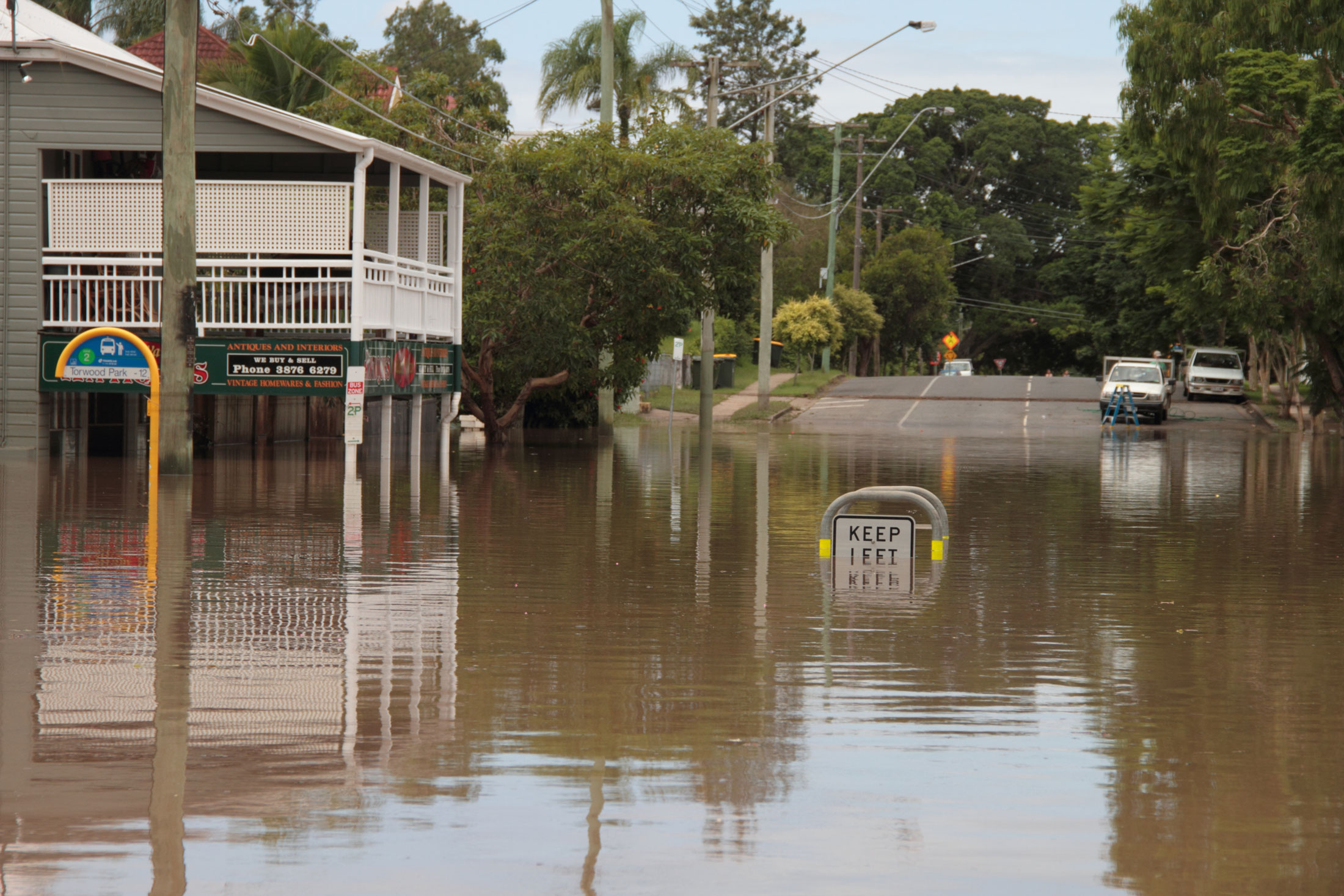Subscribe
Following the 2022 floods in Australia, we examine how flood insurance is set to change and the potential impact on policyholders
After the 2022 floods in New South Wales and Queensland, thousands of people and businesses are relying on insurance policies to recover loss and damage. But like the 2019-2020 bushfires, unfortunately, many have found that they are not covered for flood damage because of specific exclusions and limitations in their insurance policies.
If you were affected by the floods or are located in an area with flooding potential, now is a critical time to evaluate your existing cover.
What is the recent history of flood insurance in Australia?
After floods, cyclones and storms devastated parts of Australia in 2010-2011, the Australian Government commissioned the Natural Disaster Insurance Review (NDIR).
In response to the NDIR recommendations, the Government introduced measures to improve transparency and insurers’ handling of claims relating to natural disasters.
These measures included:
- Creating a database to collect, compare and report on flood risk information to enable people to better understand flood risk across Australia and for insurers to determine flood risk to properties
- Imposing the requirement for insurers to offer flood cover in home building and home contents insurance policies (and a defined class of small business and strata-title policies). Consumers can opt-out of flood cover, but this measure ensures they are given the option
- Introducing a standard definition of flood in Australia, which insurance companies were required to adopt in all its policies
The standard definition of flood is:
The covering of normally dry land by water that has escaped or been released from the normal confines of:
- any lake, or any river, creek or other natural watercourse, whether or not it is altered or modified; or
- any reservoir, canal or dam.
A standard definition was implemented because previously, the definition of flood varied between insurers. This made it complicated and difficult for consumers to decide on a policy and understand the cover, limitations, and exclusions under each policy.
What are the tips and traps concerning flood insurance in Australia?
Look out for wording
The standard definition of flood does not include storm damage, so insurers may exclude floods resulting from the sea or storm. It can also be extremely difficult to determine the cause of water damage and this leads to disputes about whether damage was caused by flood or storm.
Whether your policy extends to your circumstances will depend on the cause of damage and the specific definitions in your policy (and therefore its application).
In the context of flood damage, you should seek advice on how different policies cover flood damage, including how your policy defines the terms:
- Storm
- Storm surge
- Rainwater
For example, under your policy you may not have flood cover, but you are covered for storms. After making a claim, your insurer may appoint an expert to assess your property to determine if your property was damaged by the storm or the flood.
ASIC has found that such exclusions are often unknown to consumers at the time of purchasing a policy, but they should be a key consideration when choosing what policy to purchase. If you are unsure about the application and implications of your policy, or different policies, you should seek insurance or legal advice (or both).
Other policy provisions include what you are covered for and for how much. For example, is your home or business covered for just property or just contents, or both? What specific items are covered? See below for further information.
Ongoing and future issues
- Premiums
Where you live in an area of high flood or fire risk, your insurance premiums are likely to be significant. The recent floods saw premiums rise and become too expensive for many Australians, rendering certain disaster-prone areas “uninsurable.” The Cyclone Reinsurance Scheme was introduced to lower insurance premiums by reducing the cost of reinsurance.
- Cyclone Reinsurance Scheme
In March 2022, Federal Parliament passed laws to implement a cyclone and flood damage reinsurance pool (the Cyclone Reinsurance Scheme). The Cyclone Reinsurance Scheme has been designed to improve insurance affordability for households and small businesses exposed to high risk of cyclone and related flood damage by reducing the cost of reinsurance.
Under the scheme, general insurers providing insurance that cover cyclone risk will be required to obtain reinsurance. Failure to participate attracts civil penalties.
The pool is set to commence from 1 July 2022 and therefore the measures will only apply to eligible losses arising after commencement.
Who is covered by the Cyclone Reinsurance Scheme and when are they covered?
The new framework under the Cyclone Reinsurance Scheme covers eligible cyclone related losses for eligible insurance contracts.
Eligible cause of loss or damage
Eligible cyclone related losses include damage that:
- Is caused by a cyclone;
- Commences during a declared cyclone event (declared by the Bureau of Meteorology); and
- Covers damage due to wind, rain, rainwater and rainwater run-off, storm surge and flooding where these hazards are covered under the policyholder’s choice of insurance cover
Declarations will be made after the cyclone event has commenced and will apply retrospectively. Claims may be made for cyclone related losses if they commence during the claims period, which is determined by the dates and times of a declared cyclone event.
Eligible property
Eligible insurance contracts include contracts that cover:
- Residential home and contents
- Residential strata (including mixed-use where 50% residential)
- Small business (less than $5 million sum insured)
- Charities and not-for-profit entities; and
- Farm residential policies
Types of loss or damage
The above types of property are covered for loss of, or damage to:
- Eligible property and contents;
- Associated business interruption and consequential loss
Who and what is not covered by the Cyclone Reinsurance Scheme?
- Non-cyclone related events: the Scheme does not cover loss and damage from all severe weather events including seasonal flooding, storms and fires
- Coverage period: the claims period ends 48 hours after the end of a cyclone event. Therefore, property damage, such as from ongoing flooding after this 48-hour period will not be covered
- Property: there are a number of ineligible properties and policies, such as government-owned property
- Certain insurers: some insurers are not required to participate in the Scheme
- Maximum sums insured: the regulations will prescribe the maximum sum insured for each policy. If the sum exceeds this, the insurer will not provide reinsurance
For further advice and information on whether your home or business is covered, including whether your insurer is required to participate, feel free to contact our expert team.
What about climate change and mitigation?
We know that there are many disaster prone areas in Australia. But in 2021, the Productivity Commission estimated that 97% of disaster funding is spent on recovery and only the remaining 3% on mitigation, preparedness and resilience.
This lack of mitigation and resilience will only be compounded by the effects of climate change. As a result, we have seen a greater push for resilience, such as investment in building more resilient homes and businesses.
This issue is addressed in the Cyclone Reinsurance Scheme, which, according to the Explanatory Memorandum, will implement discounts for properties covered by the Scheme where the risk of cyclone and related flood has been mitigated. However, this is something that will be developed over time.
It is not just home and business owners who will be impacted. Builders and related industry professionals involved in building new homes or repairing homes will need to keep up-to-date with changing building requirements, standards and codes in disaster-prone areas. This is seen in Victoria in bushfire-prone areas in which the residential building standard applies and determines the type of construction required to obtain a building permit.
The final word
When considering flood insurance in Australia, it’s important that you understand the specific definitions, conditions and limitations, because they will vary from insurer to insurer. You should also consider the following:
- Limitation periods and express exclusions and conditions
- Your insurer may require you to provide evidence of your loss or damage, however you might be able to ask your insurer to agree to pay an amount without evidence. This will depend on the type of disaster and damage
- Your policy may not cover your total loss
- What happens after you submit your claim
- Taking steps to prepare your home and/or business for natural disasters and minimise your loss. Australia is already prone to extreme and unforeseen weather events and climate change is only increases this risk and uncertainty
- Look out for the introduction of the Cyclone Reinsurance Scheme, its application and limitations. Seek advice on how to protect yourself if you are not covered by the scheme
If your insurer has rejected your claim, or or you are unsure whether you are eligible to claim, we suggest seeking legal advice from our insurance lawyers. We can assist you with:
- Identifying if you are covered under any other provisions of your policy
- Advising on your insurance agreement and policy in relation to flood damage
- Considering alternatives
- Raising concerns or disputes in relation to your policy or cover
Contact our insurance team to find out more about flood insurance in Australia.
By Milly Berry
DISCLAIMER: We accept no responsibility for any action taken after reading this article. It is intended as a guide only and is not a substitute for the expert legal advice you can receive from marshalls+dent+wilmoth and other relevant experts.
Subscribe




